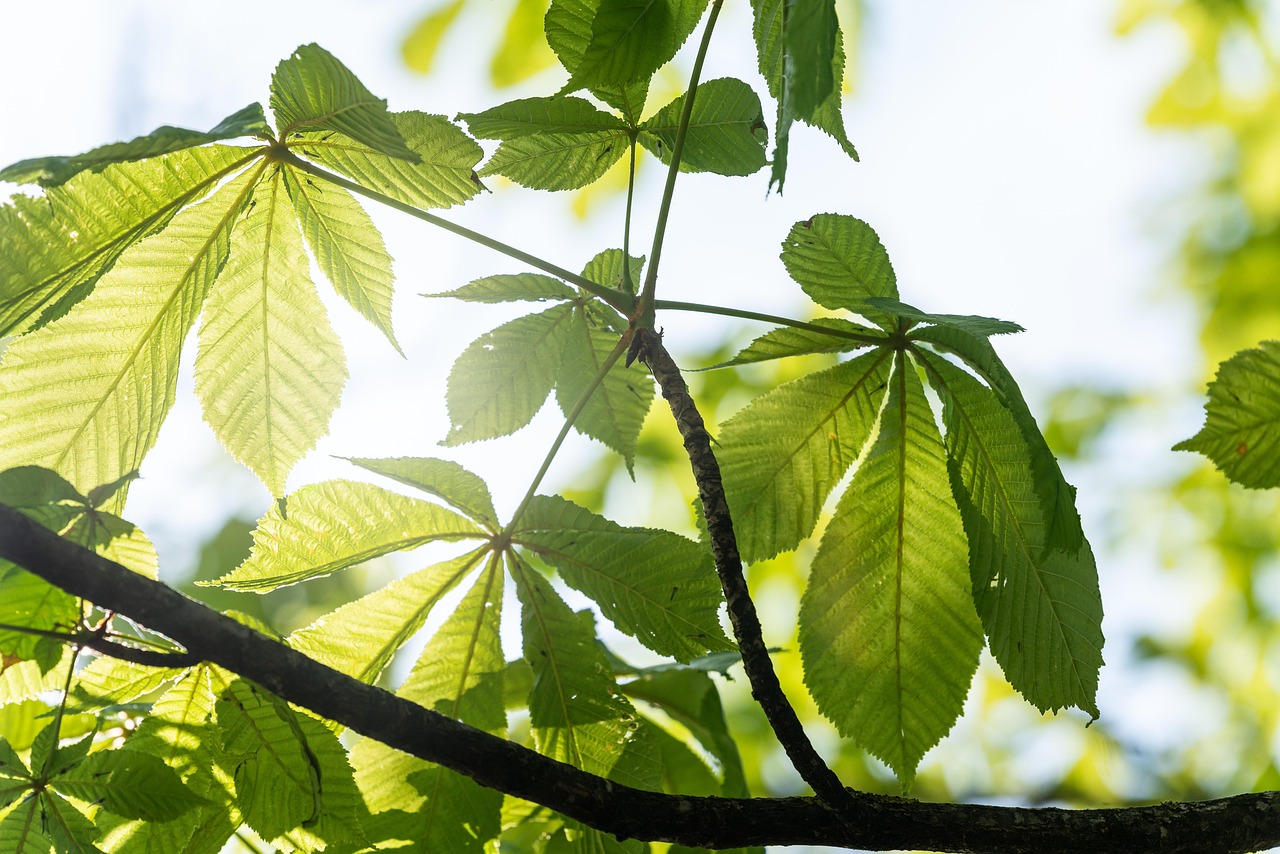Over the past decade, tree growth trends in forestry management have shown significant variations. These trends are influenced by climate change, land use practices, and advancements in forestry technology. Understanding these patterns helps in making informed management decisions for sustainable forestry.
Forestry management is crucial for maintaining healthy forests and ensuring the sustainability of natural resources. It encompasses various practices aimed at conserving forest ecosystems while allowing for timber production and other forest-related benefits. As we approach a new decade, analyzing tree growth trends over the past ten years becomes vital for adapting management strategies to current environmental conditions.

Several factors impact tree growth, including soil quality, water availability, and temperature fluctuations. Climate change has emerged as a dominant influence, leading to altered growth patterns in many regions. Additionally, technological advancements in forestry practices contribute to more effective management of forest resources.
Understanding Tree Growth Patterns
Tree growth can be categorized into different phases, including establishment, juvenile, and mature stages. Each phase presents unique challenges and opportunities for forestry management. Key factors impacting these growth stages include:
- Climate Conditions: Temperature and precipitation levels can either enhance or hinder tree growth.
- Soil Health: Nutrient-rich soils promote faster growth rates compared to depleted soils.
- Pest and Disease Management: Effective control of pests and diseases is essential for healthy tree development.
Research indicates that trees are responding to changing climate conditions in various ways. For instance, some species may grow faster in warmer temperatures, while others may struggle to adapt. Understanding these dynamics is essential for predicting future growth trends.

The following table summarizes key tree species commonly evaluated for growth trends over the last decade:
| Tree Species | Average Growth Rate (inches/year) | Common Regions |
|---|---|---|
| Red Oak | 1.5 – 2.5 | Northeast US |
| Ponderosa Pine | 2 – 3 | Western US |
| Eastern White Pine | 1 – 3 | Northeast US |
| Loblolly Pine | 2 – 4 | Southeast US |
| Douglas Fir | 1.5 – 3 | Pacific Northwest |
The data presented in the table highlights the diversity in growth rates among different species. This diversity necessitates tailored management strategies that consider each species’ specific needs and regional conditions.
Moreover, the impact of human intervention cannot be overlooked. Deforestation, urbanization, and land-use changes have significant effects on tree growth trends. Sustainable practices such as selective logging, reforestation, and afforestation are essential to counteract these negative impacts.

In addition to environmental factors, economic considerations play a role in forestry management decisions. Timber prices fluctuate based on market demand, which can influence how forests are managed. For instance, higher timber prices may promote intensive harvesting practices, potentially affecting long-term forest health.
As we move forward, incorporating data analytics and remote sensing technologies into forestry management will provide valuable insights into tree growth trends. These tools allow for real-time monitoring of forest conditions, facilitating timely interventions when necessary.
In summary, understanding the ten-year tree growth trends is critical for effective forestry management. By considering environmental factors, species-specific growth rates, and human impacts, forest managers can develop strategies that promote sustainable forest ecosystems while meeting economic needs.
Impact of Climate Change on Tree Growth
Climate change poses a significant challenge to forestry management. The rising global temperatures and shifting precipitation patterns have a direct impact on tree growth and forest health. Understanding these effects is crucial for adapting forestry practices to ensure sustainable forest ecosystems.

One of the most noticeable effects of climate change is the alteration of growing seasons. Many regions are experiencing longer growing seasons, which can lead to increased tree growth. However, this situation is not uniform across different species and locations.
- Increased Growth Rates: Some species, particularly those adapted to warmer climates, may exhibit increased growth rates as temperatures rise.
- Water Stress: Conversely, other species may suffer from drought conditions, leading to stunted growth and increased mortality rates.
- Species Range Shifts: As climate conditions change, certain tree species may migrate to higher elevations or more northern latitudes in search of suitable habitats.
Tree Species Resilience
Resilience refers to the ability of tree species to withstand environmental stressors. Some tree species are inherently more resilient than others, making them better suited for changing conditions. Identifying these species can guide reforestation and afforestation efforts.
The following table outlines several tree species known for their resilience to climate change:
| Tree Species | Resilience Factors | Ideal Conditions |
|---|---|---|
| White Oak | Drought-resistant, adaptable to various soils | Well-drained soils, moderate moisture |
| Bald Cypress | Flood-tolerant, thrives in wetland areas | Wet soils, warm climates |
| Red Maple | Adaptable, thrives in diverse soil types | Moist to well-drained soils, variable climates |
| Ponderosa Pine | Drought-resistant, grows well in poor soil | Dry regions, well-drained soils |
The information in the table highlights species that forestry managers can consider for planting and conservation efforts. These resilient species may provide greater stability in forest ecosystems under changing climatic conditions.
Technological Innovations in Forestry Management
Innovations in technology are transforming forestry management practices. The integration of advanced tools and techniques enables more precise monitoring and management of forests. Some significant innovations include:
- Remote Sensing: Satellite imagery and aerial surveys provide detailed information about forest health and growth patterns.
- Drones: Drones can efficiently collect data on tree health, species distribution, and forest density.
- Data Analytics: Advanced analytical tools help manage vast amounts of data to identify trends and make informed decisions.
The use of these technologies allows for efficient resource management while reducing labor costs and improving accuracy. For example, remote sensing can identify areas affected by pests or diseases early on, allowing for timely intervention.
Case Studies of Successful Forestry Management
Several case studies illustrate the successful application of innovative practices in forestry management. These examples highlight how combining technology with sustainable practices can lead to positive outcomes:
- Case Study 1: Precision Forestry in Oregon
This project utilized drones and data analytics to monitor tree growth and health across large tracts of land. The results showed improved growth rates and reduced operational costs. - Case Study 2: Reforestation Efforts in Brazil
A combination of remote sensing and local knowledge was employed to enhance reforestation efforts. This initiative led to the successful restoration of degraded land, boosting biodiversity. - Case Study 3: Sustainable Timber Harvesting in Canada
This project implemented selective logging practices supported by GPS mapping technology. It minimized environmental impact while maintaining economic viability for timber producers.
These case studies demonstrate the potential benefits of integrating technology into forestry management. By leveraging innovative methods, forestry managers can enhance tree growth trends while promoting sustainability.
Forest Health and Biodiversity
Maintaining forest health and biodiversity is essential for sustainable forestry management. Healthy forests provide numerous ecological benefits, including habitat for wildlife, carbon sequestration, and soil preservation. Understanding the relationship between tree growth trends and forest health is vital for effective management practices.
Biodiversity plays a crucial role in forest ecosystems. A diverse range of species contributes to ecosystem resilience, enabling forests to adapt to environmental changes. By promoting biodiversity, forestry management can enhance forest health and improve tree growth rates.
The Importance of Biodiversity in Forestry
Biodiversity in forests is not just about the number of species present; it also involves the interactions between these species. Here are some key reasons why biodiversity is important in forestry:
- Resilience to Pests and Diseases: Diverse ecosystems are less susceptible to outbreaks of pests and diseases. This diversity can help mitigate the impact of invasive species.
- Soil Fertility: Various plant species contribute to soil health through different nutrient requirements and organic matter contributions, enhancing overall soil fertility.
- Climate Adaptation: Biodiverse forests are better equipped to adapt to changing climatic conditions, ensuring long-term sustainability.
Strategies for Promoting Biodiversity
Forestry managers can implement several strategies to enhance biodiversity within forest ecosystems:
- Mixed-Species Planting: Introducing a variety of tree species can create a more resilient forest structure. Mixed-species stands tend to outperform monocultures in terms of growth rates and overall health.
- Habitat Preservation: Protecting existing habitats, such as wetlands and old-growth forests, is critical for maintaining biodiversity.
- Sustainable Harvesting Practices: Employing selective logging methods rather than clear-cutting helps preserve biodiversity while still allowing for timber production.
Monitoring Tree Growth Trends
Continuous monitoring of tree growth is essential for effective forestry management. Accurate data collection allows for informed decision-making regarding resource allocation, pest management, and reforestation efforts. Several tools and techniques are available for monitoring tree growth trends.
Methods for Monitoring Tree Growth
The following methods are commonly used to assess tree growth patterns:
- Tree Rings Analysis: Dendrochronology involves studying tree rings to determine growth rates over time. This method provides insights into historical climate conditions as well.
- Growth Models: Mathematical models help predict tree growth based on various environmental factors, enabling managers to forecast future growth trends.
- Remote Sensing Technology: Satellite imagery and LiDAR (Light Detection and Ranging) technology can provide comprehensive data on forest structure and biomass changes.
Data Collection Techniques
Effective data collection is crucial for monitoring tree growth trends accurately. Some common techniques include:
- Sample Plots: Establishing sample plots within the forest allows for systematic measurement of tree height, diameter, and overall health.
- GPS Mapping: Using GPS technology helps track changes in forest boundaries and enables precise location of monitoring sites.
- Field Surveys: Regular field surveys conducted by trained personnel provide valuable visual assessments of forest conditions.
Challenges in Forestry Management
Despite advancements in forestry practices, several challenges persist in managing tree growth trends effectively. Addressing these challenges requires continuous adaptation and innovative solutions.
Main Challenges Facing Forestry Management
- Climate Variability: Unpredictable weather patterns make it difficult to establish consistent growth rates across different regions.
- Pest Infestations: The rise of invasive pests and diseases can devastate tree populations and reduce growth rates significantly.
- Economic Pressures: Fluctuating timber prices can lead to unsustainable harvesting practices that compromise long-term forest health.
Tackling these challenges necessitates a proactive approach that combines research, technology, and community engagement. By fostering collaborative efforts among stakeholders, forestry management can adapt to evolving conditions while ensuring the sustainability of forest ecosystems.
Future Directions in Forestry Management
As we look toward the future of forestry management, several key areas require attention to ensure sustainable practices are maintained. Emphasizing innovation, collaboration, and education will be vital for adapting to the challenges ahead.
Emphasis on Sustainable Practices
Sustainable forestry practices are essential for balancing ecological health with economic viability. This approach involves:
- Adaptive Management: Forestry managers must be flexible and ready to change practices based on new data and environmental conditions. This can involve adjusting harvesting techniques or species selection.
- Community Involvement: Engaging local communities in monitoring and managing forests helps foster a sense of stewardship and responsibility, leading to better conservation outcomes.
- Certification Programs: Participating in certification programs like the Forest Stewardship Council (FSC) can promote sustainable practices and enhance marketability.
Research and Development
Investing in research is crucial for understanding tree growth patterns and forest dynamics better. Key focus areas include:
- Genetic Research: Understanding the genetic makeup of tree species can help identify those best suited for specific environments and conditions.
- Climate Adaptation Strategies: Developing strategies that allow forests to adapt to climate change, such as identifying heat-resistant species or promoting soil health, is critical.
- Technological Innovations: Continued investment in technology, such as remote sensing and data analytics, can lead to more precise forest management practices.
Policy and Regulatory Frameworks
Effective policies are essential for guiding sustainable forestry management. This includes:
- Incentives for Sustainable Practices: Governments can offer incentives to landowners who employ sustainable forestry practices, encouraging responsible management.
- Regulations on Logging: Implementing regulations that limit clear-cutting and promote selective logging can help maintain forest integrity.
- International Cooperation: Global challenges such as climate change require international collaboration on forestry policies and practices.
Conclusion
The past decade has revealed significant trends in tree growth that are vital for effective forestry management. Understanding these trends allows managers to adapt practices that support both ecological health and economic sustainability. Climate change, technological advancements, and biodiversity all play pivotal roles in shaping the future of forestry.
The integration of innovative technologies, sustainable practices, and strong community engagement will be essential as we move forward. As stakeholders work together to address challenges such as climate variability, pest infestations, and economic pressures, the focus on sustainability will ensure that forests remain resilient for generations to come.
By prioritizing research, fostering collaboration, and implementing effective policies, forestry management can continue to evolve. This ongoing evolution is necessary to meet the demands of a changing environment while preserving the vital resources that forests provide. Ultimately, embracing these approaches will lead to healthier forests, thriving ecosystems, and a more sustainable future for forestry management.
